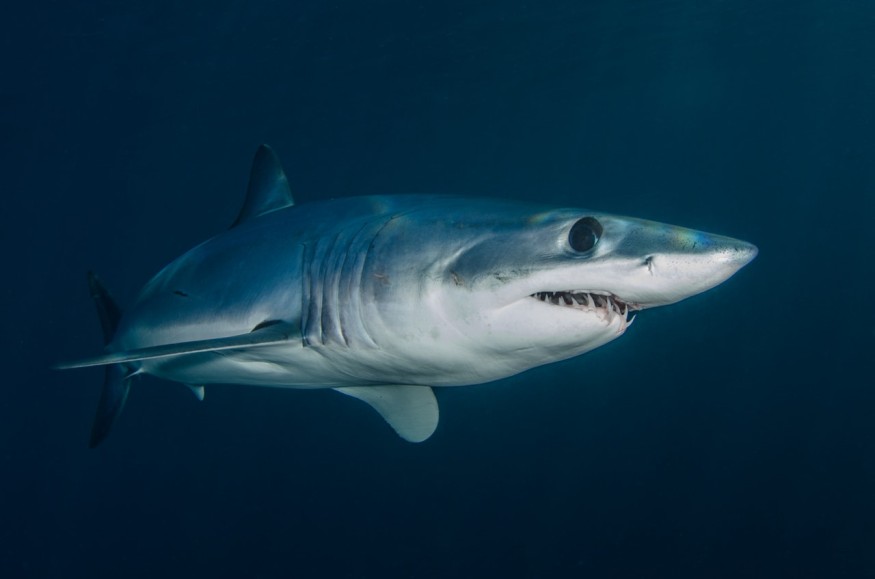Satellites ping a tagged great white shark surfacing near the North Carolina coast. Just 20 miles off the coast of North Carolina, a group of researchers tracks a giant great white shark that weighs nearly 1500 pounds and is more than 13 feet long.
Tagged and Tracked

In September 2020, the marine research group OCEARCH tagged Breton, a male great white shark, Carcharodon carcharias, for the first time.
To study great white sharks, the Ocean research group fits great white sharks with trackers that send a signal when the animals reach the water's surface.
This method allows researchers to better understand the movements and habits of the elusive, endangered species. By tagging great white sharks, OCEARCH hopes to find a way to better protect the endangered species.
The World Wildlife Fund (WWF) classifies the great white shark as a vulnerable species as its populations continue to decline due to years of hunting. Great white sharks are hunted for their fins and teeth, as trophies for sport fishing, and sometimes the sharks are incidental bycatch.
Migratory Behavior
The tagged shark, Breton, is part of a population of great white sharks that lives along the East Coast of the United States and Canada.
OCEARCH data indicate that Breton has moved as far north as the Gulf of St. Lawrence in Canada, located north of Nova Scotia.
As winter approached, the shark made its way along the east coast of Florida. The distance the great white shark traveled is about 1500 miles.
This behavior of great white sharks in the Atlantic Ocean is the annual migration where they spend the summer in northern waters while spending the winter in the south.
On May 16, Breton was spotted via his tracking device about 20 miles off the North Carolina coast near the Baldhead Island natural area near the South Carolina border.
A week earlier, he had been located 160 miles farther north than Baldhead Island off Cape Hatteras National Seashore.
The data collected by the Ocean Research Group is useful for global conservation and public safety. OCEARCH believes that great white sharks are central to the functioning of ecosystems and the conservation of biodiversity.
Although great white sharks often swim close to shore, they pose little threat to humans. There were 47 shark attacks in the U.S. last year, 2021.
OCEARCH also tracks Ironbound, another male great white shark. According to the research team's observations, the movements of the two tagged sharks share similarities.
Chris Fisher, the founder of OCEARCH, suspects that the sharks may have encountered cold water that accumulates on South and North Carolina beaches. Great white sharks then retreat from the coast.
The Great white sharks' migratory habits include moving north in the summer to feed on seals in the waters of Canada and the northern United States.
Fisher explains that great white sharks wait until the water temperature is warm enough so that the energy they need to keep warm does not exceed the energy they get from eating seals.
© 2025 NatureWorldNews.com All rights reserved. Do not reproduce without permission.





